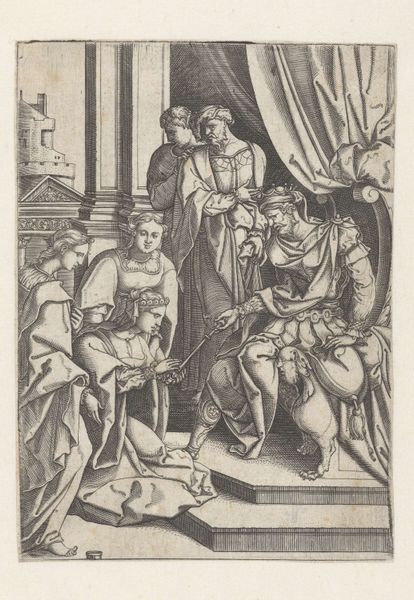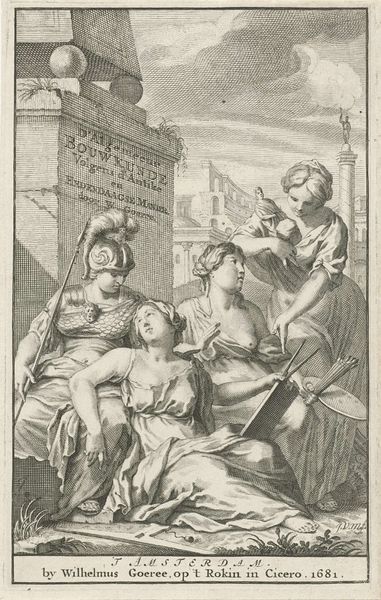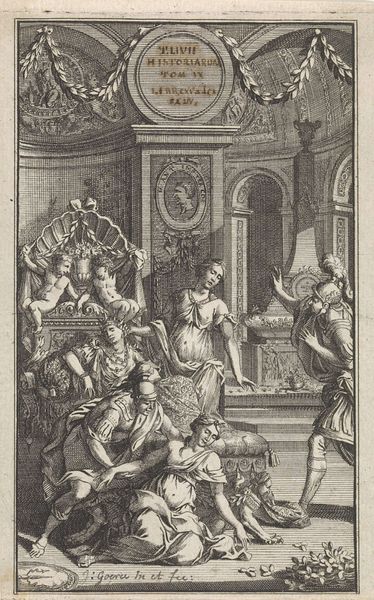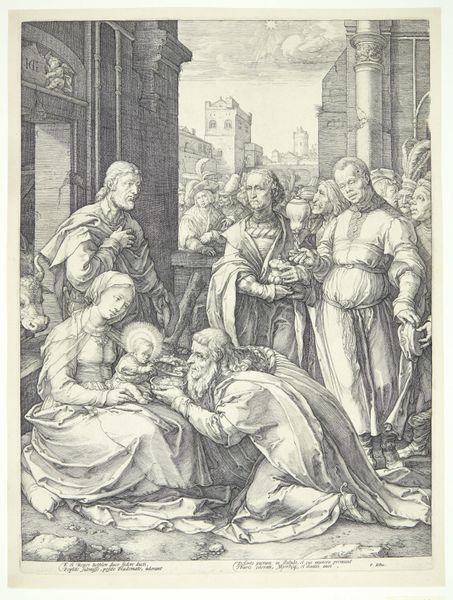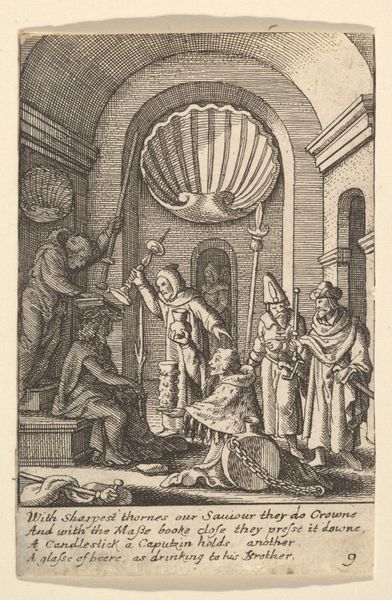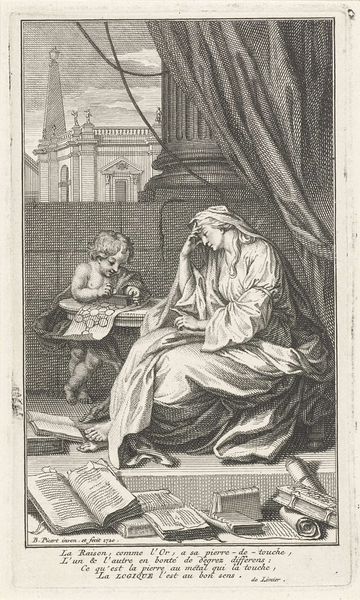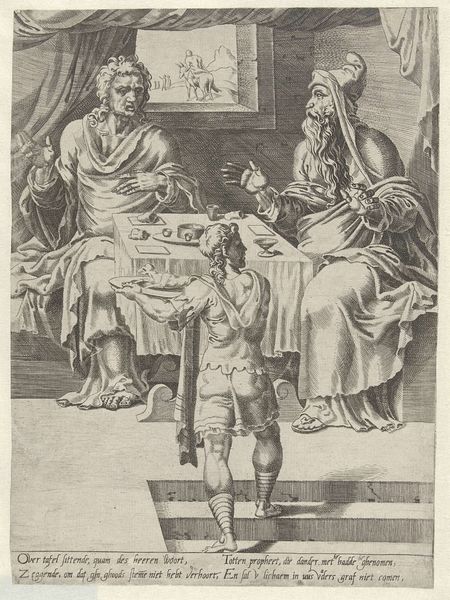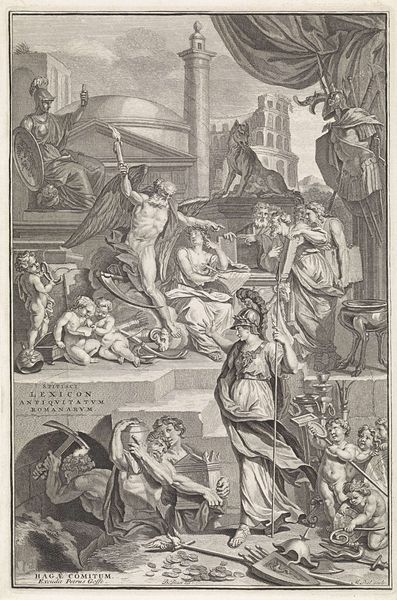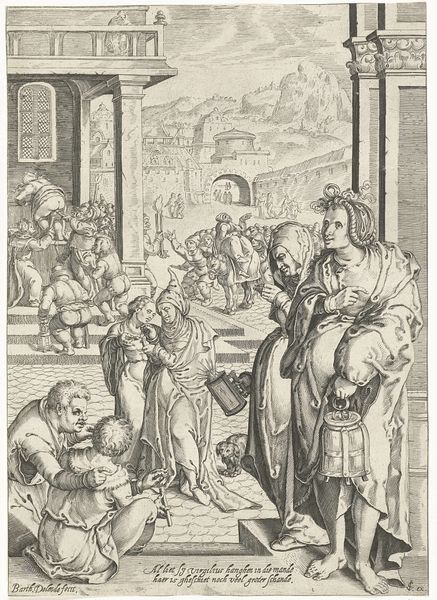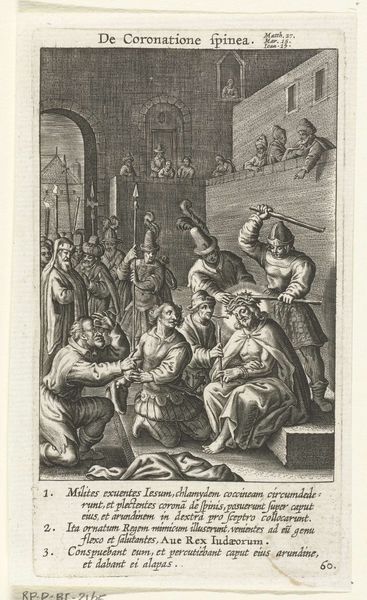
Heilige Familie met de heilige Catharina van Alexandrië en de heilige Antonius 1582
0:00
0:00
agostinocarracci
Rijksmuseum
Dimensions: height 488 mm, width 314 mm
Copyright: Rijks Museum: Open Domain
Curator: Today, we're looking at Agostino Carracci's 1582 engraving, "Holy Family with Saint Catherine of Alexandria and Saint Anthony," currently held at the Rijksmuseum. Editor: My first impression? It feels… staged. The figures are very deliberately placed, and the details, especially the drapery, are intensely considered, rendering an air of formality. Curator: The formality is undeniable. Notice how the composition divides into distinct registers, creating a visual hierarchy. Above, we see the Madonna and Child, Joseph, and an angel playing with a lamb. Below, Saint Catherine, accompanied by a boar, and Saint Anthony with his rosary. Each section is balanced. Editor: That positioning, though "balanced," is not without consequence. Separating the holy family from the other saints could reinforce social hierarchies present during the late Renaissance. The boar beside Saint Catherine may symbolize the suppression of carnal instincts, associating the feminine with that base desire to be conquered, of course. Curator: Perhaps. But let's consider the lines. Carracci masterfully uses cross-hatching to create a wide range of tones, giving a sense of volume and depth despite being a black and white print. Observe the attention to texture – from the smoothness of the Madonna's face to the coarse fur of the boar. Editor: True. The technical skill can't be denied, but considering Carracci's sociopolitical context invites more questioning. Catherine’s placement in front of what appears to be an illustrated map implies her domain and scope, but in being bound to the bestial, her domain is limited through association. I wonder about that too. What function did such iconography play in its time? Curator: A compelling point. And I agree that situating the work within its time is essential. However, it’s also essential to consider the artistic elements, such as symmetry, contrast, and the manipulation of light and shadow, which really establish mood here. Editor: Indeed, there's certainly much more to explore in this detailed scene. Curator: And now, if you’ll follow me, let's continue on to the next exhibit.
Comments
No comments
Be the first to comment and join the conversation on the ultimate creative platform.
